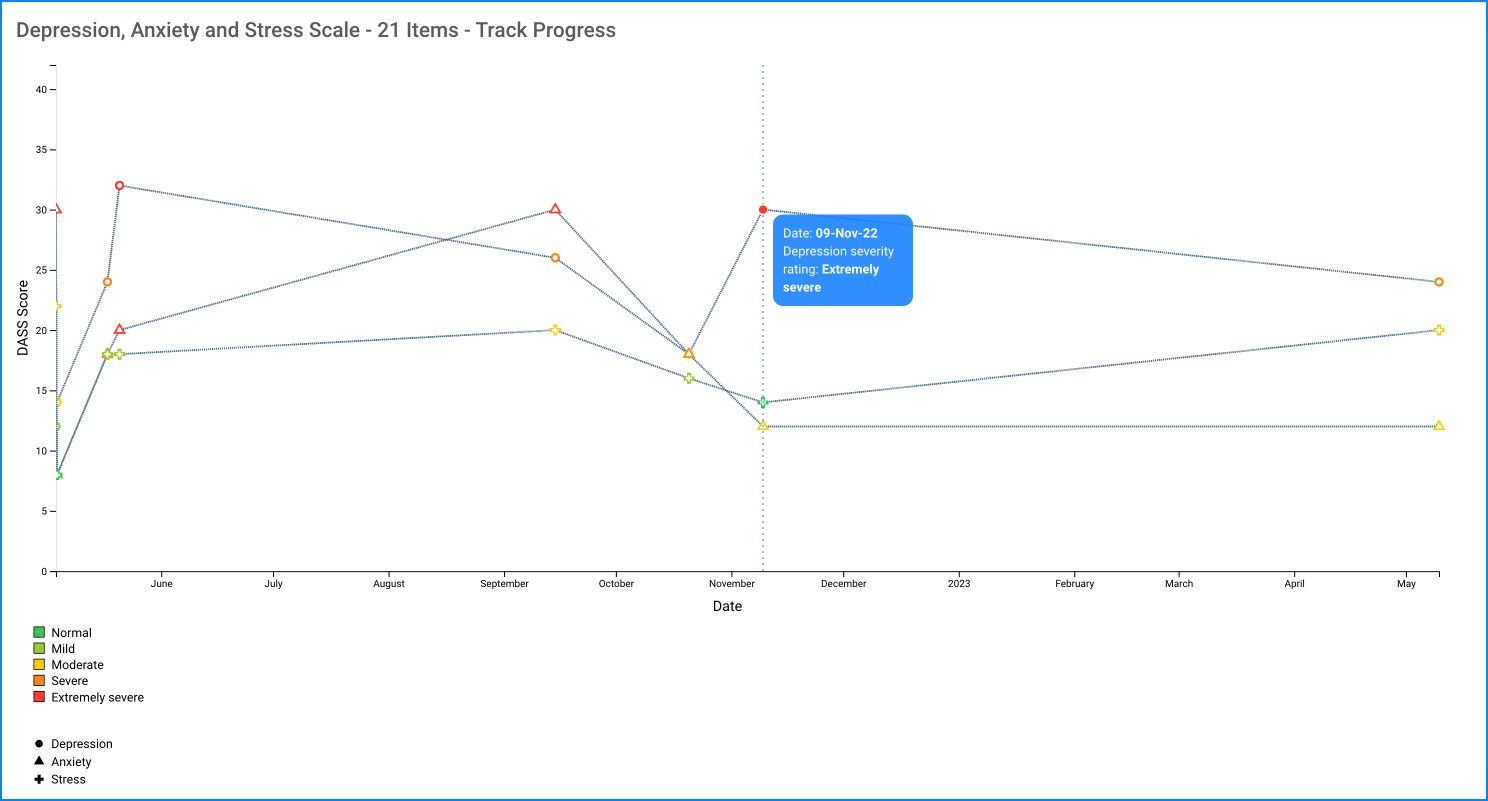Since the questionnaire relies on client self-report, all responses should be verified by the clinician, and a definitive diagnosis is made on clinical grounds taking into account how well the client understood the questionnaire, as well as other relevant information from the client.
Characteristics of high scorers on each DASS scale
Depression scale
The DASS in research
The DASS may be administered either in groups or individually for research purposes. The capacity to discriminate between the three related states of depression, anxiety and stress should be useful to researchers concerned with the nature, aetiology and mechanisms of emotional disturbance.
As the essential development of the DASS was carried out with non-clinical samples, it is suitable for screening normal adolescents and adults. Given the necessary language proficiency, there seems no compelling case against use of the scales for comparative purposes with children as young as 12 years. It must be borne in mind, however, that the lower age limit of the development samples was 17 years.
Clinical use of the DASS
The principal value of the DASS in a clinical setting is to clarify the locus of emotional disturbance, as part of the broader task of clinical assessment. The essential function of the DASS is to assess the severity of the core symptoms of depression, anxiety and stress. It must be recognised that clinically depressed, anxious or stressed persons may well manifest additional symptoms that tend to be common to two or all three of the conditions, such as sleep, appetite, and sexual disturbances. These disturbances will be elicited by clinical examination, or by the use of general symptom check lists as required.
The DASS may be administered and scored by non-psychologists, but decisions based on particular score profiles should be made only by experienced clinicians who have carried out an appropriate clinical examination. It should be noted also that none of the DASS items refers to suicidal tendencies because items relating to such tendencies were found not to load on any scale. The experienced clinician will recognise the need to determine the risk of suicide in seriously disturbed persons.
The DASS and diagnosis
The DASS is based on a dimensional rather than a categorical conception of psychological disorder. The assumption on which the DASS development was based (and which was confirmed by the research data) is that the differences between the depression, the anxiety, and the stress experienced by normal subjects and the clinically disturbed, are essentially differences of degree. The DASS therefore has no direct implications for the allocation of patients to discrete diagnostic categories postulated in classificatory systems such as the DSM and ICD. However, recommended cutoffs for conventional severity labels (normal, moderate, severe) are given in the DASS Manual.




